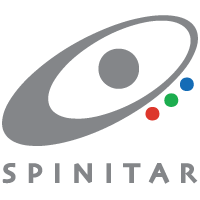Adding recurring streams of revenue to your technology integration business will help to develop predictable revenue that can make your company more sustainable in the long run.
We often hear from integrators that they are too busy working in their business to work on their business. There is a tendency to just keep executing and move onto the next project, which is how the AV industry has traditionally operated. This project-based mentality remains pervasive, and it has taken a long time for AV to really understand recurring revenue and maintenance agreements. However, the tide has turned as the industry evolves.
Product-centric business models have been replaced with a focus on managed services and developing monthly recurring revenue. In the past, RMR was not a top consideration, but it has become a critical success factor for integrators to remain relevant.
We spoke with Jay Rogina, Principal at Spinitar, about this phenomenon, and how a focus on services has helped the company create predictable streams of revenue.
“I got into the AV industry in 1988, and at the time there wasn’t any focus on services,” says Rogina. “There were no master agreements, or after-the-sale support agreements – it was all part of the sale, and it was all about the sale. But, at the end of the day, it’s the services end of the business and recurring revenue that support the company. You can’t always count on that initial sale, especially in a mediocre or a bad economy. You have to be tighter on things, and you’ve got to have some sort of recurring revenue stream that doesn’t ebb and flow in good or bad times the way the big sale does. Without that predictable revenue, you can struggle to keep individuals employed.”
“Our recurring revenue stays pretty consistent because everybody has to keep their systems running,” Rogina reports. “In a down economy, customers are less likely to upgrade or refresh their systems, but they will keep everything running until their business is thriving again.”
Q360 provides one view of the customer
“We needed the necessary systems in place to be able to manage and grow our services business, and Q360 gives us the tools we need,” says Rogina.
By 2011, Spinitar was a $30 million integrator running on Excel plus 4-5 other software platforms and none of them talked to each other. “Each system collected different pieces of information, but we needed a way to connect the systems, because the spreadsheets just weren’t cutting it. We even tried to write some of our own software, until we realized we couldn’t do it on our own,” Rogina reports.
This was the turning point that convinced Spinitar to invest in Solution360’s unified software platform.
“Before, we were looking around for files or pieces of paper and searching spreadsheets. Now we have complete visibility. Q360 just brings it all together because it is real data, and the numbers don’t lie,” says Rogina.
“One of the biggest benefits is how easy it is to look up an entire customer history. All the way back to initial quotes, all the jobs that have been done and all the service calls – everything we have done is tied to that client in Q360. Plus anyone in the company can see what we have going on for each customer, and that’s awesome,” Rogina concludes.
If you are considering branching into RMR, it won’t be long before you’ll want to trade in your Excel spreadsheets for a more robust system. A unified software platform will provide you the visibility you need to develop predictable and profitable revenue.
Solutions360 gives integrators the necessary tools to develop recurring streams of revenue for sustainable growth
If you would like to learn more about how Solutions360 can help you develop predictable revenue in your technology integration business, contact us, or schedule a demo today.



